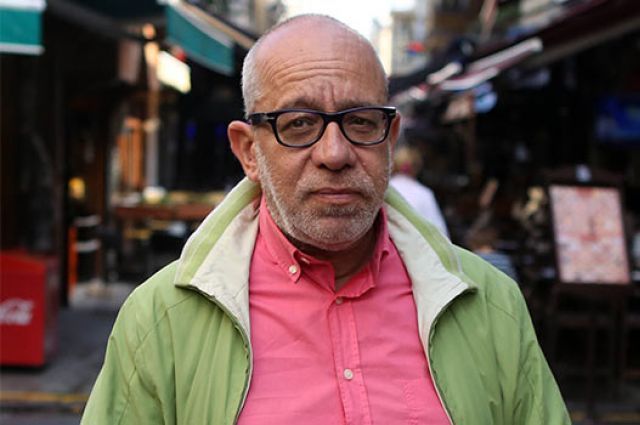On 20th January, BBC Culture published an article on the most anticipated 45 books of 2024, where Elif Shafak entered the list in a high-ranked place along with Marquez and Stephen King, while on Jan 23, Elif Shafak was listed as the Silver Award winner of this year’s Nielsen Bestseller Awards.
Meanwhile, in Türkiye, the events on Shafak’s behalf were different. On Jan 24, writer and journalist Mine G Kırıkkanat shared the lawsuit filed by her against Shafak for the allegation of plagiarism from her Kırıkkanat’s novel “Sinek Sarayı” (1990) in Shafak’s novel “Flea Palace” (Bit Palas) (2002) has been resolved in favor of Kırıkkanat. Elif Şafak and her publisher, Doğan Kitap, announced they would appeal the decision and take it to a higher court.
Even though the incident seemed like a ‘plagiarism’ case, it was not.
Artdog pursued whether an expert in literature, fiction, language, and style genuinely authored the expert report that led to this decision. Within this context, we have also consulted literature academics. Before moving on, it is worth examining what happened from level to level.
There was a “political lynch” against Elif Şafak through tweets and retweets.
Mine Kırıkkanat announced the lawsuit’s outcome with a tweet stating it was in her favor. Subsequently, her publisher Kırmızı Kedi shared the new edition of the book.
Ümit Özdağ, the leader of the Victory Party (Zafer Partisi), tweeted his congratulations to Kırıkkanat, to which she replied, “Thank you, professor.”
Historian and writer Şeyhmus Diken reacted to this exchange of thanks and congratulations, saying, “One writer sued another writer for plagiarism, the first court ruled in favor of the plaintiff, and a politician congratulated. That’s it.”
Meanwhile, journalist Merdan Yanardağ also asked, “Was it confirmed that Elif Şafak’s literature is a sham? What do you think?”
However, reactions from literary circles to the verdict were not delayed.
Literary scene
Author Gaye Boralıoğlu stated, “The expert reports in the plagiarism case between Elif Şafak and Mine Kırıkkanat are not just pathetic, they are ridiculous. If these reports create a legal outcome, it means that no single sentence can be written in Türiye.”
Meanwhile, critic, writer, and publisher Semih Gümüş expressed his views, saying, “I believe none of the plagiarism allegations I have seen in this country have been serious. What is literature, what is fiction… Those who do not care about these can try to alleviate their delusions by blaming someone else. I am more curious about what those called.
‘experts’ understand from literature. Furthermore, our current courts cannot decide on plagiarism cases in literature. Such cases require expert courts, which we do not have.”
How to know if an expert is an expert?
ArtDog Istanbul has obtained the expert report of the case. The report states, “While even the title of the book is said to be stolen, considering the similarity in names, plot development, characters, settings, time frame, and the outcome, it is acknowledged that there is more than mere inspiration; the plaintiff’s novel has been benefitted from both its title and content, and this benefit and utilization is deemed to be at the level of plagiarism.”
The expert report was written by three individuals and claimed that The Flea Palace (Bit Palas) has 5% plagiarism from Sinek Sarayı. One of the signatories is labeled as “Intellectual Property Law Specialist,” another as “Publisher-Author,” and the third as “Financial Expert Witness.”
Artdog has focused on the expert with the profession of “Publisher-Author.” This expert in question has worked in education in the 1980s, writing and publishing textbooks only. This expert has no fictional or academic work in the field of literature. The expert is on the committee that prepares questions for elementary school-level competitions. So, the question remained: How reliable is this expert, having no work of literature or fiction?
Problems with choosing an expert
We have accessed the Istanbul Expertise Regional Board Regional Expertise List of the Ministry of Justice. In this 1066-page list, there are 11,584 experts listed. Each of them has their primary and sub-specialty areas of expertise listed. In this list; we have searched for the primary specialty of literature. As a result, we have encountered only three people, and they are not even listed as the ‘main category’ but only under “sub-specialty. In short, in the expertise areas of the “experts” in the Elif Şafak and Mine Kırıkkanat case, there is no literature. So, what do academics say? We leave the word to literature academics Çimen Günay Erkol, Bahriye Çeri, and Seval Şahin.
Çimen Günay Erkol: Insufficient Evaluation, Erroneous Inference
Literary academic and writer Çimen Günay Erkol said, ‘‘Mine Kırıkkanat’s novel “Sinek Sarayı” (1990) and Elif Şafak’s Flea Palace (2002) are two separate texts that share similarities in terms of being set in Beyoğlu and bringing their characters together using a motif of an apartment building, but they differ from each other in terms of plot and form.’’
Erkol added that the court’s final decision (plagiarism conclusion) seems troubling as no proper expertise in fiction literature exists on the expert’s list.
‘‘Evaluating the frequency of words appearing in a text measures “word frequency,” and comparing the word frequencies of texts is insufficient to determine plagiarism. Concluding “plagiarism” because certain words appear frequently in both texts is a flawed inference made through inadequate evaluation of fictional texts,’’ noted Erkol.
Erkol said in a written statement to Artdog, ‘In plagiarism cases, the individuals selected as experts should come from the relevant field. For example, one would expect a “physics expert” to be selected if it is about a physics article. However, when it comes to literary texts, it is assumed that individuals who are literate, or who have engaged in various forms of writing, or having teaching experiences, etc., are competent to provide expert opinions on fictional texts. This results in wrong decisions, and we see that the conclusions of plagiarism do not reflect reality because the final verdict has been reached based on word frequency. The court’s failure to consider objections to the expert and the report indicates that the judge and the plaintiff have adopted a common stance.
On the other hand, in cases like these involving literary texts, it is expected that literary academics or writers with expertise in literature would serve as experts. This is not an unusual or extraordinary expectation. However, the court did not see it fit, and it requires an explanation as to why a person without expertise in literature is included in the court’s list of experts and even selected for such a task to investigate an allegation of plagiarism in literary texts. In my opinion, we can consider this case as one example showing flaws in the functioning of courts in Türkiye. If such erroneous inferences can be made recklessly, one cannot help but wonder which other decisions are made based on similarly flawed inferences.
Bahriye Çeri: Plagiarism, Copying, Inspiration, Intertextuality…
Another literary academic, Bahriye Çeri, who lives and works in France, said, ‘‘Let’s recall Jean Giraudoux’s words “Plagiarism, except for knowing the first one, is the foundation of all literature,” have not prevented plagiarism from being taken seriously in France or becoming a specialized field. Copyright began with a royal decree in 1777 and was clarified by two laws in 1791 and 1793. In the late 19th century, significant lawsuits were filed for plagiarism or counterfeiting. As the number of books increased, so did the number of cases, with approximately 70,000 cases filed annually, according to information provided by Radio France. Reports on this topic are frequently encountered in the press.’’
Çeri said in a written statement: ‘‘Numerous articles and books in France discuss what constitutes plagiarism and what does not. Is it plagiarism or rather inspiration/influence? Is it intertextuality, a relationship between texts? These are the points that are emphasized. Labeling everything as plagiarism is as dangerous as ignoring plagiarism altogether. The subject is also being researched scientifically.
Let me explain what I mean by these examples. I want to mention the name Hélène Maurel-İndart, who, as far as I know, has no work in Turkish yet. She is a professor of French literature at Tours University and an expert on plagiarism. She is a member of the Cultural and Discursive Interactions Research Team. Her courses cover scientific integrity, publishing history and editorial strategies, literary creation, and recreation. Her research topics include originality and plagiarism in literature, intertextuality, plagiarism, and originality in twentieth-century French narrative. She also has books on this subject, but the most well-known one is “Du Plagiat” or “Plagiarism,” published by Gallimard in 2011. “Plagiats, les coulisses de l’écriture” or “Plagiarism: Behind the Scenes of Writing” (Editions La Différence, 2007) is another book on the same topic. These provide extensive resources, including articles, podcast series, and websites. Hélène Maurel-İndart is not the only person working on this subject. Jean Noël Darde, for example, is another plagiarism expert. Plagiarism in academic publications is his area of expertise. There are also other books available. Roland de Chaudney’s “Dictionnaire des plagiaries” or “Dictionary of Plagiarists,” Perrin, 1990, presents and analyzes a series of cases in depth.’’
Çeri added: ‘‘What I want to emphasize is that plagiarism in literature is a field of expertise in universities. Such books have not yet been translated into Turkish. However, they offer detailed examinations. It’s worth elaborating on these details a bit. Has the similarity of ideas, imitation, similarity of subject matter, pastiche, or intertextuality been used to disguise plagiarism? If the answer to this question is no, then these methods are considered entirely legitimate. On the other hand, the debate between intertextuality and plagiarism is itself a subject of study. Intertextuality is noted for allowing texts and ideas to travel, enabling authors to act without being accused.’’
In need of an expert
Let’s continue with the questions: Is the work a reproduction, or has the author transformed the borrowed element with their own personality? Did the author intentionally use an element from another work, or did the questioned matter result from unconscious recollection? Is borrowing clearly indicated (such as mentioning the author or the relevant work), or is it concealed to prevent confusion about the authorship of a specific passage?
Regarding plagiarism, expression rather than content—meaning, style, the way the author combines an idea, an image, a scene, and composition—is the most important distinguishing factor. By repeatedly reading certain authors, we sometimes internalize their expressions or metaphors, sometimes unconsciously. Many people unconsciously or consciously borrow from authors they admire and continue a sort of internal conversation with them. But composition is different from this.
Academics
In summary, all experts, books, articles, discussions, and some criteria I have tried to touch upon want to say this: Judging a plagiarism accusation requires detailed expertise. All names and publications have come together on this point. Whether they are literary critics or literature professors, it is not enough to be in academia or outside academia. Only someone who researches this subject using scientific methods can make judgments. The ones who weigh most heavily on the scale are academics.
Seval Şahin: Absurd and hilarious
Discussing whether there is plagiarism in a fictional work today is nothing but an irony. Common thoughts, characters, and themes have existed for centuries. Thinking that the work is plagiarized and resembles each other is, so to speak, ridiculous. Then what will we do with Şeyh Galib? When the rumor arose that he stole his masterpiece “Hüsn-ü Aşk” from Mevlana, he said, “I took its essence from the Mesnevi/I stole, and I became the owner of a treasure.”
Which expert can decide that a fictional work is stolen from another fictional work? Academics who specialize in the subject may be the ones to consult, but how many would want to do this, I wonder. Or rather, are there criteria in the law that determine the equivalent of this situation, and if so, are they considered legally binding in a work of fiction? In such a case, we all become part of a fiction together.












